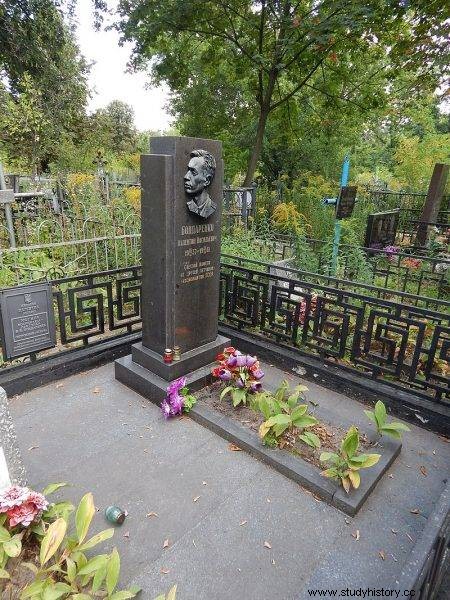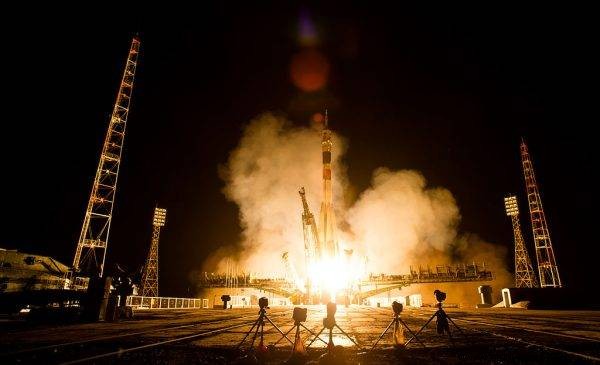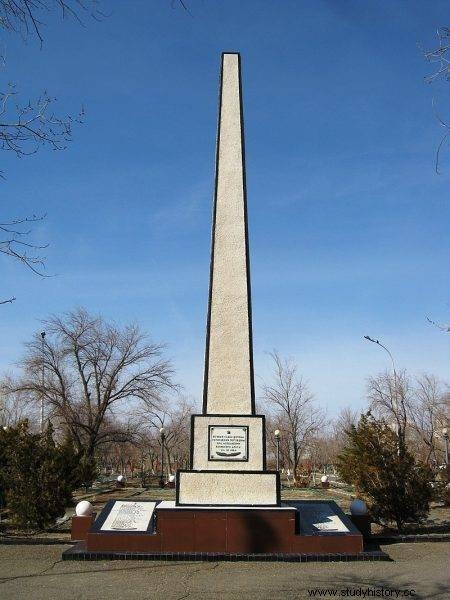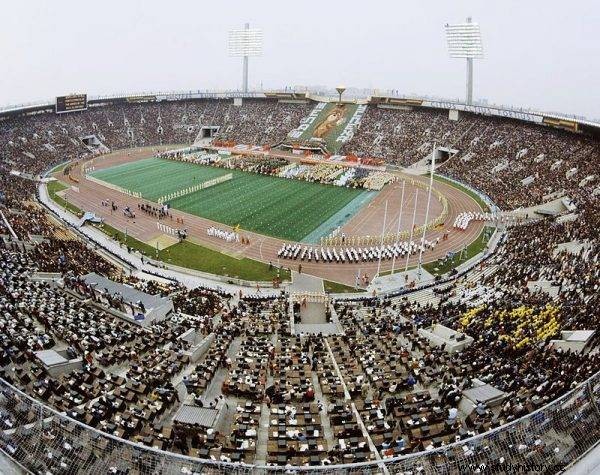Hundreds of lives lost, but the world would never know. Several dozen catastrophes were concealed in the USSR. Eventually the truth came out.
Already at the time of the establishment of the Soviet Union in 1922, the authorities limited citizens' access to information. With time, they achieved true mastery in this. It was only under perestroika, in accordance with the policy of openness ("glasnost") , journalists began to reveal the long-hidden truth about the tragic events that cost the lives of hundreds of citizens and destroyed the myth about the power of the USSR.
Would-be cosmonaut
Shortly after Yuri Gagarin's triumphant space flight, the US media revealed that he was not really the first Soviet cosmonaut. According to US intelligence data, the USSR made previously unsuccessful attempts to send a man into space . Unfortunately, all of them ended in failure and the death of crew members. The Soviet Union then denied these revelations. However, in the late 1980s it was revealed that one of the victims of the space race was 24-year-old Valentin Bondarenko, a young husband and father.
The tragedy happened on March 23, 1961. It was the last stage of flight preparation. Bondarenko was then at the Institute of Aviation and Space Medicine. He had been in the isolation chamber for almost two weeks. All the functions of his body were monitored 24 hours a day. That morning, Valentin completed his 10-day isolation and removed the instrument sensors. He rubbed the places where they were attached with alcohol-soaked cotton swabs. When he finished, he threw them in the trash. Unfortunately he missed. The swabs fell on the electric stove. The fire broke out instantly. Bondarenko tried to put it out, but to no avail . Since the chamber was hermetically sealed, the staff of the Institute did not get inside after 30 minutes . Valentin already had severe burns.

The tomb of Valentin Bondarenko
The cosmonaut was taken to hospital. As one of the doctors recalled years later, his body was so damaged that it was impossible to find any vein . In the end, it was possible to inject into the foot, which was protected against fire by shoes. Despite the efforts of the medics, Walentin died. Today the media would immediately report a similar incident. However, there was a conspiracy of silence in the USSR. Nobody was to hear about Bondarenko's death. Space flight was a matter of state importance. The launch of the man-on-board rocket was scheduled for April this year, so everything was done to prevent news of the tragedy at the Institute of Aviation and Space Medicine from reaching citizens.
Ballistic missile victims
The Soviet Union also took part in the arms race. In the late 1950s, the Soviets began work on the R-16 ICBM. The project manager was artillery marshal Mitrofan Niedeilin, commander of the Strategic Destination Missile Forces. Niedielin reported directly to Nikita Khrushchev, the then Secretary General of the Central Committee of the CPSU. The Kremlin grew impatient. He urged Niedielin to try the R-16 rocket as soon as possible.
Finally, the marshal and the military engineers decided it might be in October 1960. The test was carried out at the Baikonur cosmodrome (then it was called Leninsk). In the morning of October 21, the rocket was delivered to Baikonur. On October 21 and 22, it was placed in the launcher, warhead docking and testing of all systems were carried out. It was also refueled. By the decision of the State Committee the start was scheduled for 19.00, October 23. Shortly before this date, problems were detected on some systems. The start was postponed. Unfortunately, only for one day.

It was decided to carry out the test at the Baikonur cosmodrome (illustrative photo)
Marshal Niedielin was aware of the fact that the rocket was not ready for launch. However, he could not delay the test any longer. November 7 - the 43rd anniversary of the October Revolution was approaching. A test flight should have been conducted before that date.
Recipe for disaster
Niedielin kept repeating:"What will I tell Khrushchev?" Therefore, it was decided to conduct the test despite the doubts. Mikhail Ostaszew, son of one of the victims of the Baikonur crash, later said:
The rocket could not be in the launcher for more than 24 hours. Then it was necessary to drain the fuel components, clean the tanks and inspect the engines. These procedures would take at least a month, yet the anniversary of the October Revolution was fast approaching . In addition, the engineers of the time did not know how to drain the fuel. Even today it is a complicated procedure. In 1960, it was simply impossible. And that is another reason why the test was not postponed.

Monument to the victims of the Niedielin disaster
Niedielin decided to supervise the test personally, so he was only 17 meters from the launch pad during the launch. Numerous officers accompanied him. If the marshal had been less zealous, the death toll of the explosion that occurred a few seconds after take-off would have been lower. The explosion and fire were so powerful that the bodies could not be identified. Niedielin was recognized by the embroidery on the uniform. Father Mikhail Ostaszewo - after a stamp with his name. Between 78 and 124 people died. The exact number of victims has not been established to date . Information about the explosion was immediately classified. To explain the disappearance of Niedielin, it was reported that he died ... in a plane crash. The others - officially - died "while on military service". Their charred remains were placed in zinc coffins and sent to relatives. Dozens of people were buried in Baikonur.
Interestingly, despite the tragedy, the Soviets did not give up testing the R-16 rocket. Another was carried out in February 1961. The truth about the so-called the Niedielin catastrophe was revealed in 1990.
Unlucky match in Moscow
On October 20, 1982, in Moscow's Luzhniki, a UEFA Cup match was held between Moscow's "Spartak" and the Dutch "Haarlem." The stadium could hold 82,000 fans, but only 16,000 tickets were sold due to bad weather . The previous day it was raining and snowing. The Luzhniki administration ordered workers to remove snow and ice. It was done, but - as it turned out on October 20 - inaccurately. The consequences of this neglect turned out to be dire.
"Spartak" quickly took the lead. "Haarlem" - probably not used to such conditions - played sluggishly. Soviet footballers were also slow. Several minutes before the end of the match, many spectators decided that nothing important would happen on the pitch and began to leave the stands. Although there were several exits at the stadium, only one was opened. It was a "revenge" for the behavior of fans who shouted unrefined slogans at the policemen and threw various objects at them.

Stadium in Łużniki; photo from the tragedy period
Just before the end of the match, the player of "Spartak" Sergey Shvetsov scored the second goal. The fans leaving the stadium wanted to return to the stands to celebrate their team's victory. As they tried to turn back, they fell onto the icy steps and were trampled by the pressing crowd. Some people died due to lack of air. Witnesses reported that pleading for help was heard. The authorities withheld information about the tragedy, which, according to official data, killed 66 people. The actual death toll could have been as high as 340. The bodies were taken out of the stadium. Relatives later searched for their loved ones in hospitals and morgues, but the doctors choked water in their mouths. It took a week for the authorities to allow family members to collect the bodies.
The truth about the tragedy saw the light of day in 1989. Then the Dutch footballers funded a monument to the victims of the crash.
Sources:
- М. Volkova. Секретная катастрофа:маршал Неделин погиб на Байконуре 60 лет назад.
- Секретная катастрофа:маршал Неделин погиб на Байконуре 60 лет назад , rg.ru.
- В Зайкин, Трагедия в Лужниках. Факты и вымысел , «Известия» of 7/20/89.
- Р. Нестлер, Трагическая гибель космонавта Валентина Бондаренкo.
- Трагическая гибель космонавта Валентина Бондаренко , inopressa.ru.
- Wilson, After England, more tears fall on Moscow's plastic pitch, theguardian.com.
